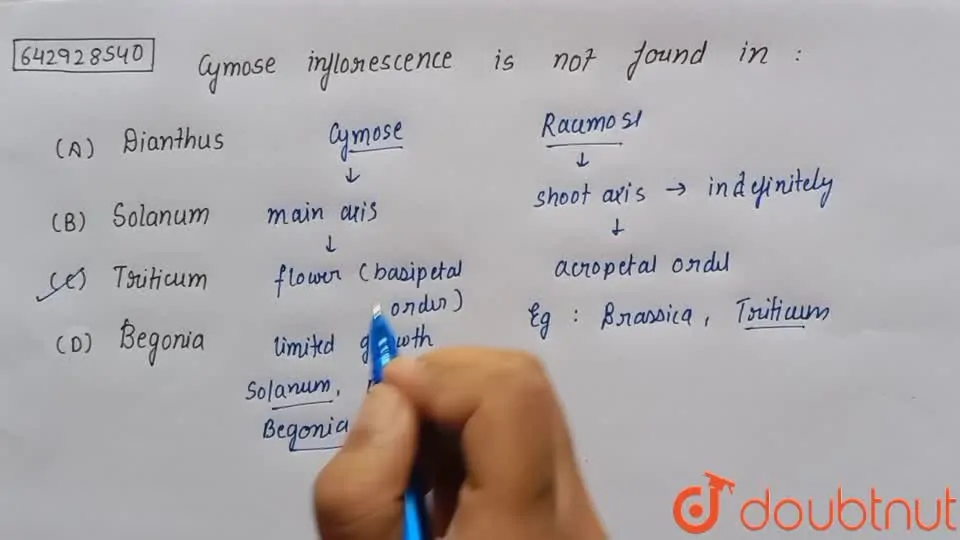Cymose inflorescence is not found in
A
Dianthus
B
Solanum
C
Triticum
D
Begonia
Video Solution
|
Answer
Step by step video & image solution for Cymose inflorescence is not found in by Biology experts to help you in doubts & scoring excellent marks in Class 12 exams.
Updated on:21/07/2023
Related Playlists
Similar Questions
Identify the incorrect statements from the following
P. Cymose inflorescence is found in Hibicus sp
Q. Hypanthodium is found in Ficus benghalensis
R. Synandrous stamen is found in Calotropis
S. Hesperidium type of fruit in Mango.View Solutioninflorescence is meant for
View SolutionIn cymose inflorescence
View SolutionCymose inflorescence is present in
View SolutionCymose inflorescence is present in
View SolutionLargest inflorescence is found in
View SolutionCymose inforescence is present in
View SolutionCymose inflorescence is identified by -
View SolutionCymose inflorescence is present in
View Solutionhypanthodium inflorescence is found in
View Solution


